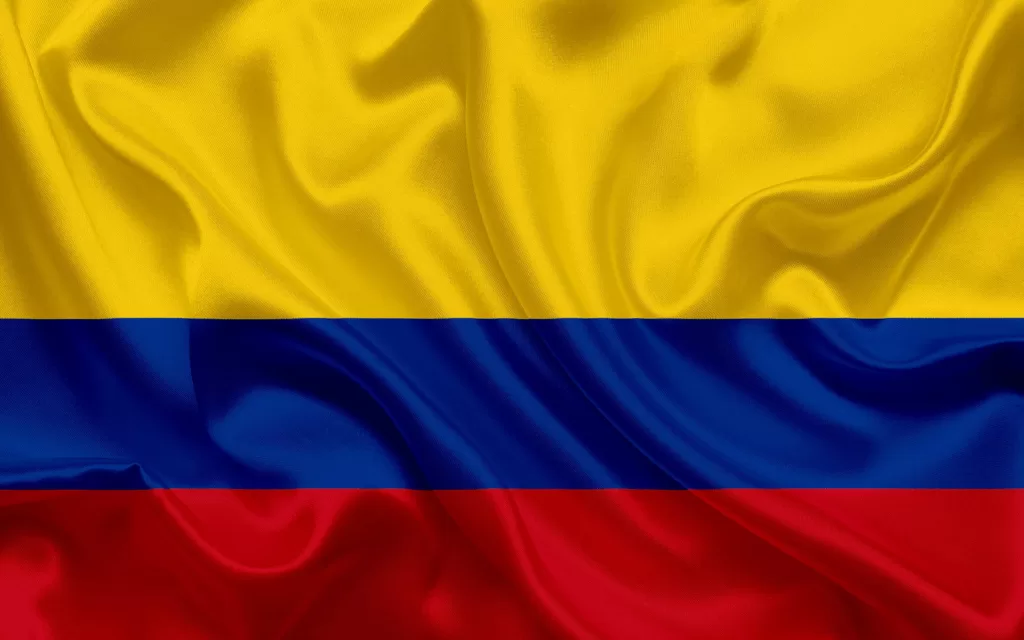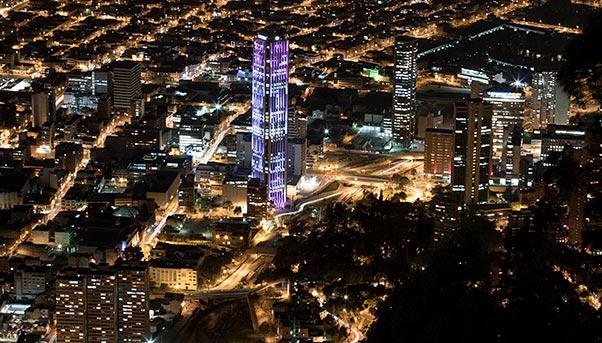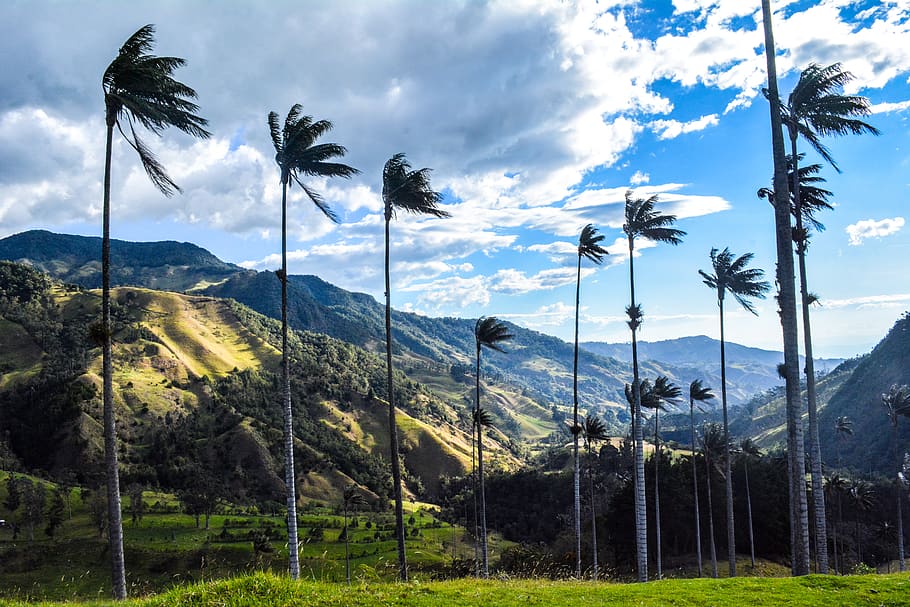Colombia Country Report

Such a vibrant and beautiful country in South America. Colombia is known for its rich culture, breathtaking landscapes, and warm-hearted people. One of the things that make Colombia unique is its incredible biodiversity. From the lush Amazon rainforest to the stunning Caribbean coast and the Andean mountain range, Colombia is home to a wide variety of ecosystems and wildlife. Colombia has a diverse population with a mix of indigenous, European, and African influences. The country is known for its music, especially genres like cumbia and vallenato, which are popular not only in Colombia but also across Latin America. When it comes to food, Colombian cuisine is delicious and diverse. You must try dishes like bandeja paisa, arepas, and empanadas. And of course, don’t forget to indulge in some Colombian coffee, which is renowned worldwide for its rich flavor. Colombia has faced its share of challenges, but it has made significant progress in recent years. The country has seen improvements in security and tourism, with more and more travelers discovering the beauty of Colombia.
Last updated: April 8, 2022
Security
Colombia has made significant progress in improving its security situation. The government has implemented various measures to combat crime and violence, leading to a decrease in overall crime rates. However, it’s important to note that like any other country, Colombia still faces certain security challenges, particularly in certain regions. Some remote areas, especially those affected by drug trafficking or armed groups, may have higher levels of insecurity. It’s advisable to stay informed about the current situation and any travel advisories issued by your government. When traveling in Colombia, it’s recommended to exercise caution and take common-sense precautions. Here are a few tips:
1. Stay informed: Keep up to date with the latest travel advisories and local news. Register with your embassy or consulate before traveling.
2. Research your destination: Learn about the specific regions or neighborhoods you plan to visit. Some areas may have higher crime rates or specific safety concerns.
3. Transportation: Use reputable transportation services and avoid traveling alone at night, especially in unfamiliar areas.
4. Valuables and personal belongings: Keep your belongings secure and avoid displaying valuable items in public. Use hotel safes to store your passport, cash, and other important documents.
5. Blend in: Try to dress modestly and avoid wearing flashy jewelry or accessories that may attract unwanted attention.
6. Be cautious in crowded areas: Stay vigilant in busy tourist spots, as pickpocketing and petty theft can occur. Keep your personal belongings secure and be aware of your surroundings.
7. Trustworthy sources: Seek advice and recommendations from reliable sources such as local authorities, tour guides, or trusted locals.
Last updated: April 21, 2022
Infrastructure

The government has invested in developing transportation networks, including roads, highways, and airports, to enhance connectivity within the country. Major cities like Bogota, Medellin, and Cartagena have well-developed public transportation systems, including buses and metro systems. Colombia also boasts modern and efficient airports, such as El Dorado International Airport in Bogota and Jose Maria Cordova International Airport in Medellin. These airports serve as important hubs for both domestic and international travel. In terms of telecommunications, Colombia has a well-established network of mobile and internet services. You’ll find good coverage across most urban and rural areas. Additionally, Colombia has made efforts to improve its energy infrastructure, with a focus on renewable energy sources. The country has significant hydroelectric power generation capabilities, which contribute to its energy needs.
Last updated: April 21, 2022
Environment

The environment in Colombia is incredibly diverse and rich in natural beauty. From lush rainforests to stunning coastlines and snow-capped mountains, Colombia offers a wide range of ecosystems. Colombia is home to a significant portion of the Amazon rainforest, which is known for its incredible biodiversity. The country also has unique ecosystems such as the Tatacoa Desert and the Paramo, a high-altitude ecosystem found in the Andes Mountains. Colombia is committed to environmental conservation and has established numerous national parks and protected areas. These areas help preserve the country’s unique flora and fauna, including rare and endangered species like the Andean condor and the jaguar. However, like many countries, Colombia faces environmental challenges such as deforestation, illegal wildlife trade, and pollution. The government and various organizations are working together to address these issues and promote sustainable practices. There are also opportunities for eco-tourism in Colombia, where visitors can explore the country’s natural wonders while supporting conservation efforts. Whether it’s hiking through the Cocora Valley or diving in the crystal-clear waters of the Rosario Islands, there’s something for every nature lover.
The Caribbean coast and the islands of San Andres, Providencia, and Santa Catalina are prone to organized rain forests during the June to November hurricane season, with activity peaking in September. In other parts of the country, heavy rains can sometimes cause flooding, and the greatest risk of flooding and landslides is in the Colombian Andes and the lower reaches and valleys of the country’s main rivers. Snow storms may occur in the highlands.
Last updated: December 6, 2022
Health and Medical
Healthcare in Colombia has made significant advancements in recent years. The country has a universal healthcare system called the General System of Social Security in Health (SGSSS), which provides access to medical services for all residents. Colombia has a strong network of healthcare facilities, including public hospitals, private clinics, and specialized medical centers. Major cities like Bogota, Medellin, and Cartagena have well-equipped hospitals with skilled medical professionals. In terms of diseases, Colombia, like any other country, faces various health challenges. Some of the common diseases in Colombia include respiratory infections, cardiovascular diseases, and certain types of cancers. The government and healthcare organizations are actively working on prevention, treatment, and management of these diseases. It’s important to note that healthcare services and disease prevention may vary depending on the region and individual circumstances. It’s always a good idea to consult with local healthcare professionals or refer to official sources for the most accurate and up-to-date information.
Last updated: September 7, 2022
Political
The country has a democratic system with a multi-party political structure. The two major political parties in Colombia are the Liberal Party and the Conservative Party, which have played significant roles in shaping the country’s political history. Over the years, Colombia has faced challenges such as armed conflict, drug trafficking, and corruption, which have had an impact on its political climate. However, the government and various organizations have been working towards peace and stability in the country. In recent years, there have been efforts to address social and economic inequalities, promote human rights, and strengthen democratic institutions. Colombia has also been actively involved in international relations, cooperating with other countries and participating in regional organizations. It’s important to note that political perspectives and opinions can vary among individuals, and it’s always interesting to engage in discussions and learn different viewpoints.
Last updated: March 18, 2022















